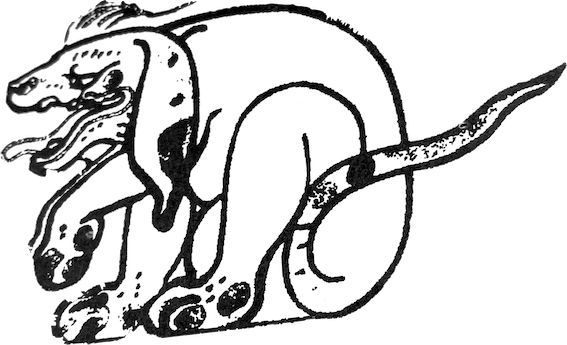Anthropology of the Brain by Roger Bartra

Anthropology of the Brain by Roger Bartra

"[H]is social theory on The Imaginary Networks of Political Power and, recently, for his anthropo-clinical theory of the “exocerebro” (exo-brain), that argues that the brain is partly constructed by its “cultural prostheses”, external socio-cultural elements that complete it."-Roger Bartra.
ロジャー・バルトラの「外脳」ならびに「文化の補綴」理論は、インターネットが、我々の外的な脳として「機能」してくれて、我々の「文化的想像 力」を(抽象的な意味での)構造的な補綴を可能にするという議論である。ちなみに、「抽象的な構造」というのはレヴィ=ストロースの構造の概念と同様、撞 着語法あるいはフィクションのことである。
"In this unique exploration of the mysteries of the human brain,
Roger Bartra shows that consciousness is a phenomenon that occurs not
only in the mind but also in an
external network, a symbolic system. He
argues that the symbolic systems
created by humans in art, language, in
cooking or in dress, are the key to understanding human consciousness.
Placing culture at the centre of his analysis, Bartra brings together
findings from anthropology and cognitive science and offers an original
vision of the continuity between the brain and its symbolic
environment. The book is essential reading for neurologists, cognitive
scientists and anthropologists alike." https://ci.nii.ac.jp/ncid/BB1670725X(「ロ
ジャー・バルトラは、人間の脳の謎に迫るこのユニークな研究で、意識とは心の中だけでなく、外部のネットワーク、つまり象徴システムの中で起こる現象であ
ることを示している。芸術、言語、料理、服装など、人間が作り出した象徴的なシステムこそが、人間の意識を理解するための鍵であると主張する(→だからレ
ヴィ=ストロースに似るのである)。文化を分析の中心に据えたバルトラは、人類学と認知科学の知見をまとめ、脳とその象徴的環境との連続性について独自の
ビジョンを提示している。したがって、この本は、神経学者、認知科学者、人類学者にとっての必読書となる。」)
| Part I. Consciousness and Symbolic Systems:
|
|
| 1. The hypothesis |
チェシャ猫、コリン・マックギン |
| 2. Evolution of
the brain |
アダム・クーパー、ダマシオ |
| 3. Brain
plasticity |
ドナルド・ヘッブ、GnRH(ゴナドト
ロピン放出ホルモン), ダマシオ |
| 4. Is there an internal language? | チョムスキー、マクルーハン、エーデル
マン、クリストフ・コッホ、フランシス・クリック、ダグラス・フィールド |
| 5. Amputations and
supputations |
ラマチャンドラン、 |
| 6. The atrophied
exocerebrum |
フィニアス・ゲージ、レオ・カナー、ハ
クスレイ、 |
| 7. The symbolic
substitution
system |
ゴールドバーグ、ディオゲネス、ダニエ
ル・デネット、 |
| 8. Neuronal
mirrors |
アインシュタイン、マリアン・ダイアモ
ンド、コルビニアン・ブロードマン、グラハム・ブラウン、エーデルマン、ハンフリー、ガルシア・ロルカ |
| 9. Consciousness
within hand's
reach |
ウィリアム・ジェイムズ、ラマチャンド
ラン、ヘレン・ケラー、ヴィゴツキー、 |
| 10. Outside and
inside: the
immense blue |
チョムスキー、ジェリー・フォッダー、
ギアツ、ロバート・ウィルソン、マウントキャッスル、ルベン・ダリオ |
| 11. The musical
spheres of
consciousness |
スザンヌ・ランガー、(イオニアン、ド
リアン、フリジアン、リディアン、ミクソリディアン、エオリアン、ロクリアン)、ジャン・シベリウス、チャイコフスキー、プラトン『テマイオス』、アント
ニオ・ダマシオ、アンソニー・ストー |
| 12. Artificial
memory |
キケロ、ブルーノ、アレクサンドル・ル
リア、ノーヴァート・ウィナー、ロジャー・スペリー |
| 13. The lost soul |
ポパー、エクルス、ウィトゲンシュタイ
ン |
| Part
II. Brain and Free Will: |
|
| 14. The Hands of
Orlac |
The
Hands of Orlac(Orlacs
Hände、;邦題「芸術と手術」)とは、1924年に公開されたオーストリアのサイレント・ホラー映画。モーリス・ルナールの小説『オルラックの手』の
映画化。鉄道事故で両手を失ったピアニストに殺人罪で処刑された男の手が移植される。その手が何か犯罪を起こすのでは不安がる主人公。そして、とうとう殺
人事件が起きてしまう。『カリガリ博士』 |
| 15. Does free will
exist? |
アインシュタイン、スピノザ、 |
| 16. An experiment
with freedom |
ベンジャミン・リベット、ポパー |
| 17. The moral
brain |
チョムスキー、マルク・ハウザー、ポー
ル・チャーチランド、アンディ・クラーク、ヴィゴツキー、ベイトソン |
| 18. Unchained
reasons |
ヒューム、コッホ |
| 19. Freedom in
play |
ホイジンハ |
| 20. External
symbols |
ホイジンハ『ホモ・ルーデンス』;ベル
クソン |
| 21. Final reflections. | ユクスキュル |
リンク
文献
その他の情報
Copyleft, CC, Mitzub'ixi Quq Chi'j, 1997-2099